From Tom:
Like last week’s, this post is another that focuses not on the technique of fabric collage but your mindset as an artist. The technique while challenging to master, is relatively simple to learn. What’s more complex is learning how to use fabric as an artistic medium, especially for the those who often don’t consider themselves artists. Here Susan draws the distinction between “looking” and “seeing.” Teaching her students how to see what their subjects really look like rather than what they expect takes up much of her class time. She does this by pointing out what she sees, asking what they see, and coming to an agreement about what is “really” there.
This is the last week (for now) that my husband Tom will be choosing some his favorite “inspirational” posts to revisit. Tasks related to the passing in early March of my mother, Meta, or Oma as she was known to readers, have abated somewhat. Thank you for your many kind condolences and the sharing of your experiences as caregivers. I will return to blog post responsibilities with Tom next week. —Take care, Susan
Unlearning Looking and Learning Seeing in Fabric Collage
Originally published : April 17, 2021
Looking and seeing are different abilities. Without training anyone can look—but not everyone can see.
When I teach a fabric collage class, I spend a good amount of time each day teaching the technique of fabric collage. But that doesn’t take up all my time. Boiled down to the basics, the technique is simple enough to outline in three steps:
- Find fabric
- Cut fabric
- Glue fabric
Sure, it’s more complicated than that, and there are plenty of hints and tips I give students to help them find, cut, and glue fabrics in certain ways, but teaching the technique of fabric collage is only part of my job.
What I spend most of my time on is teaching my students to see.
As I go from student to student giving them feedback, I’m telling them what I see—in their original image and drawing, in their fabric palette, or in the collage they’ve started. By this time my students have looked at their image and their fabrics hundreds or thousands of times. But they may have looked without seeing.
What do I mean?
I mean most of my students—and most people, including myself—have brains that are accustomed to using shortcuts when interacting with the world. It’s the way our brains are designed. It’s efficient, saves energy, and has been a life saver for thousands of years.
Here’s an example of a shortcut: long tail, stripes, fangs and claws equals tiger. We don’t need to know the exact shade of its fur or how long its teeth are or whether it has a scar on its face. In fact, if we took the time to see those things we wouldn’t be around to pass on our genes to the next generation.
So our brains are wired to use these shortcuts. Brown fur, floppy ears, black nose equals dog. Even a newborn knows that two eyes, nose, and mouth equals face.
What I have to teach many of my students is how to ignore those shortcuts or override them. When they look they bring up an image that is already formed by habit and sometimes instinct. It’s basic and doesn’t have a lot of detail to it but it probably saved an ancestor’s life a thousand years ago.
Seeing is studying the specific image and noting its colors, shapes, and shades as though encountering it for the first time.
When you see rather than look you are often surprised! You see colors you didn’t expect. You see shapes that aren’t what you thought they should look like.
A good example of this happened in my April 2021 Live Online Class. Michele Holmes was very excited to do a portrait of her beloved dog “Hugo” (photos above).
Michele said she wanted to make the fabric collage of her brown dog more colorful. But she didn’t know what colors or fabrics to use or where. She was looking at Hugo and seeing a brown dog. And he is very brown.
But as I pointed out to her, when you look more closely, when you begin to really see him, you will notice that he isn’t only brown. Especially in the areas of brightest highlight and deepest shadows, her dog is actually every color from purple to yellow. When Michele saw those colors I was pointing out, she was so enthusiastic about it, it made my day.
I mentioned to my husband, Tom, how pleased I was that I was able to convey the idea of multiple colors being contained in Michele’s one-color Hugo—and it gave him the idea for this blog post. So a big thanks to Michele, for allowing us to share her excitement of seeing the unexpected colors of her dog—and another thanks to Tom for the technical skills to digitally “lift” the colors from the original photo.
In the detail photos below, Tom did what I did for Michele using annotation tools in the online class. He has circled a few of Hugo’s shadows and highlights. But then, using a “color picker” in Photoshop, he found pixels of the colors and placed swatches of those colors next to the details. This helps make clear the distinction between Hugo’s overall “brown” fur and the places where the “brown” deepens or fades into other colors.
Granted the colors aren’t bright. But you can definitely see how Hugo is not a generic “brown.”
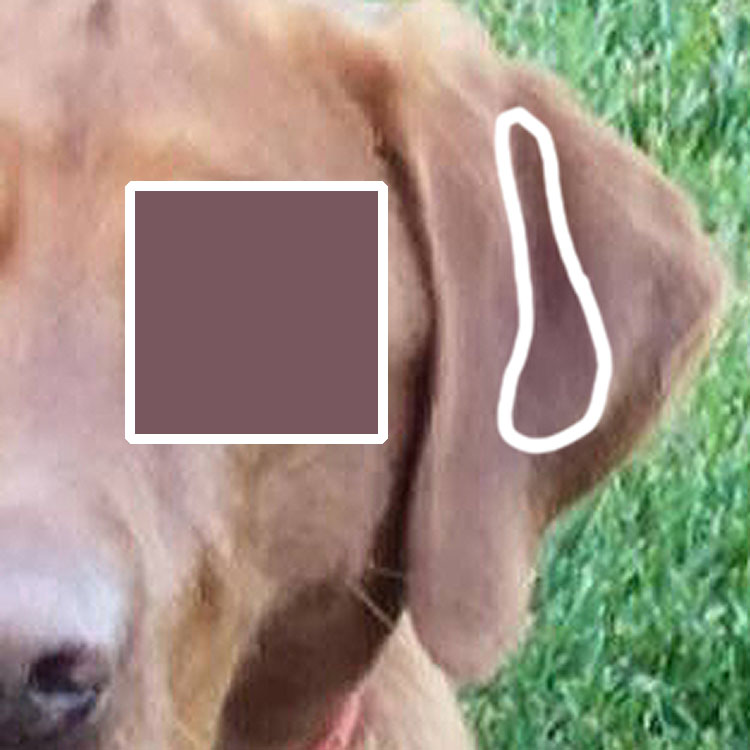
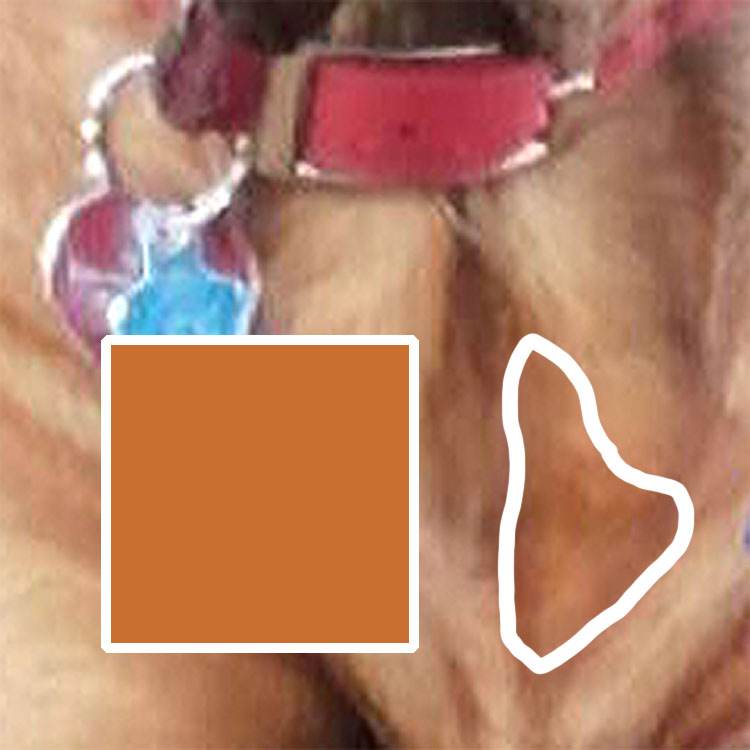
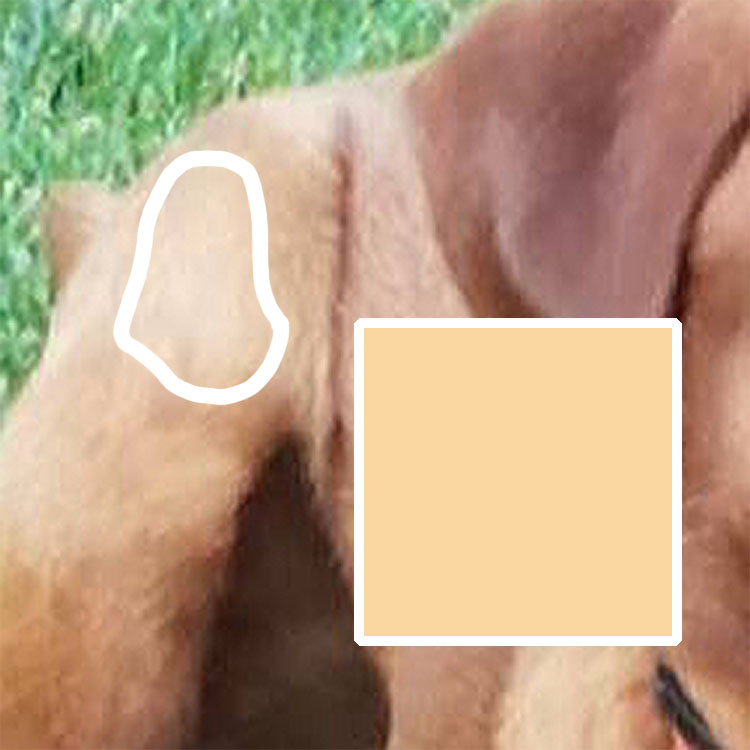
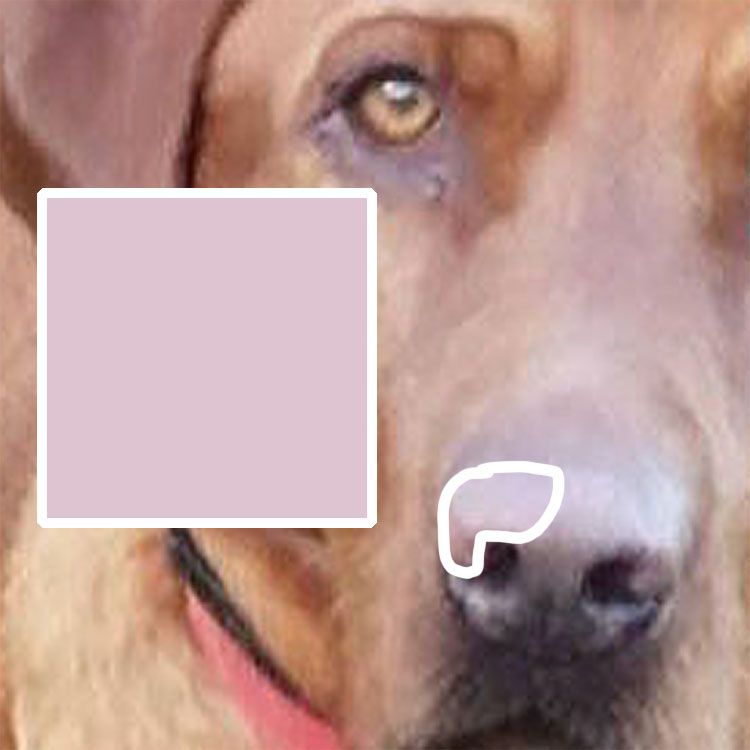
Because fabric collage is art, once you see these colors one can make the conscious choice to not only replicate the colors but to accentuate them, to push the colors further, into stronger purples, oranges, yellows, and pinks.
Or not. It’s the artist’s choice.
But in order to make the decision of whether to use brighter colors, one has to see that they are there to begin with.
An artist does not merely look. An artist sees.
Space Available in May 2023 Live Online Class
You are invited to join me via Zoom for a 5-Day Live Online Fabric Collage Class. This class is for all levels of fabric collage proficiency, from beginner to advanced. The class runs May 29–June 2, 2023.
I have included an update of the number of spots available and will do my best to keep it updated as it changes. If you find on the registration page that the class has sold out and would like to be placed on a waitlist, please email Tom ([email protected]). Thank you.
CLASS DESCRIPTION: Five-Day Live Online Fabric Collage Classes (Animals Only)
Price: $995 per student
Required Class Fee: $169 for the Fabric Collage Master Class—an online resource “manual” to refer to before, during, and after class—yours for life ($199 regular price; contact tom@tomallenbooks for coupon code for discount. This fee is waived if you already own the Master Class)
Hardware and Software Requirements: Computer, tablet, or other larger-screen device; reliable internet; ability to photograph and send images of collage in progress (a cellphone is recommended); Zoom meeting software (free to download)
Maximum Number of students: 12
Subject Matter: This class deals with animal subjects—furred, feathered, or scaled—pets, exotic animals, birds, insects, sea life, sea slugs, whatever type of animal appeals to you.
Included: Forty-five minute private pre-class coaching session to prepare you for Day One of class.
See links below for more information.
May 29-June 2, 2023
2 Spots Remaining (as of April 7)
Register and pay here:
https://susancarlson.com/product/may-2023-live-online-fabric-collage-class-with-susan-carlson-animals-only/
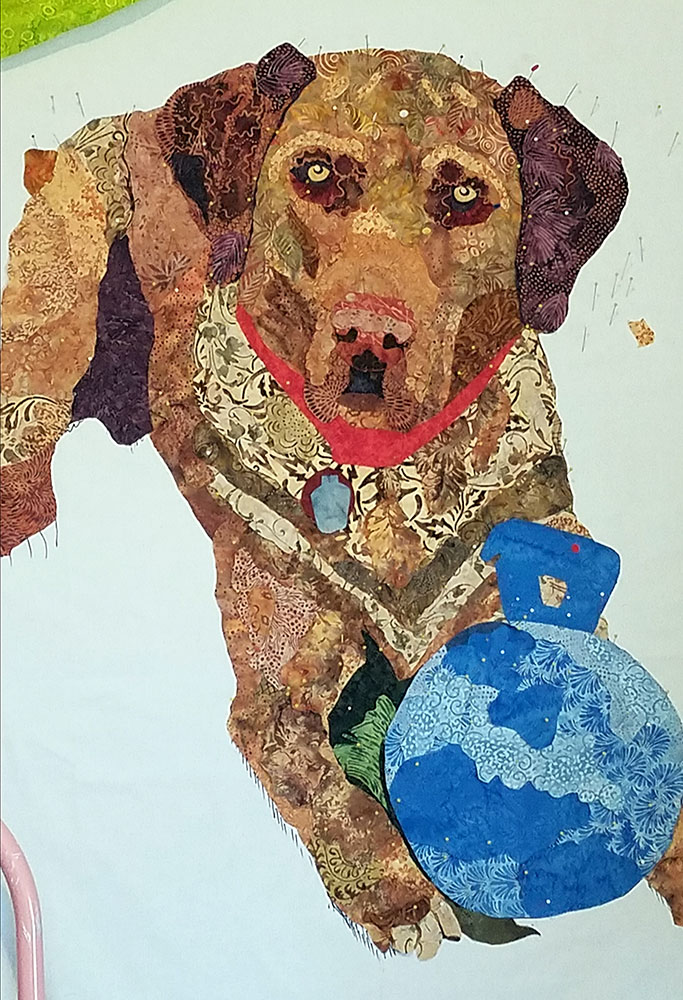


This is such a wonderful article. I don’t know how I missed it the first time around. I was already familiar with the color picker tool and how surprising the result can be to pick a color out of an image this way. I’ve concentrated more on value, and as I’ve learned from both traditional patchwork quilting and your collages using nontraditional color. When I think in terms of color it’s more about my personal preferences or in terms of color theory. This is a really valuable article that makes so many aspects of the collage process (or almost any artistic endeavor) come into focus better. Thank you!
Wow! That is an eye opening article. Thank you for helping us see with different focus.
And I’m praying for you as you grieve. I didn’t know until today. She must have been wonderful because you certainly are.